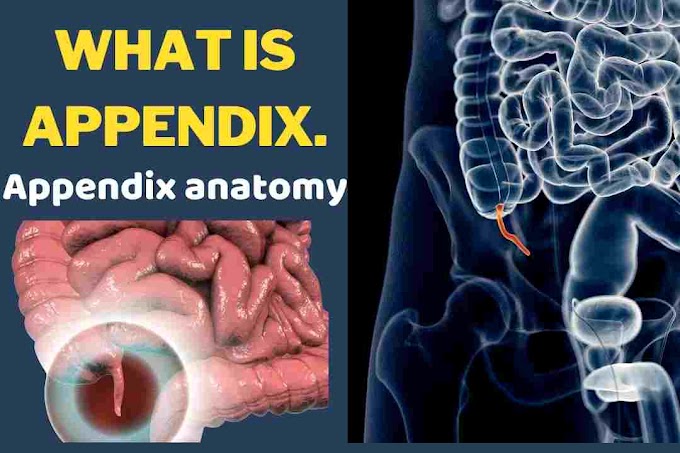Today we’re talking about lower back pain.
A problem that people often take care of
themselves but even then it's still one of the top two reasons people visit
doctors and responsible for up to 40% of all missed work days.
Okay let me begin by giving you a bit of a
mixed message. for most of us back pain is actually nota quote disease. it's
more part of the normal experience since we've walked onto legs spinal
structures such as bones ligaments discs joints and nerves interacted marvelous
ways to support us to do the million things we do with our backs . Occasionally
this backfires and gives us what we call mechanical back pain. The severity of this
pain can be extreme. But always reflect the seriousness of the underlying
problem. The vast majority gets better by itself without medical intervention.
Why pain in lower back?
On the
other hand we know that while it does get better thirty percent of you have a
recurrence in six months and forty percent within a year. If this sounds
familiar it may be helpful to stop seeing your recurrent back pain is discrete
event and mores a chronic vulnerability. that you need to create what I call a
back resilience plan. Maybe learn some lessons from people who manage their chronic
diseases well .they build a support team and reach out early when there's a problem
.they make small changes and they focus on basics like managing stress getting
quality sleep and keeping up.
So let’s
start with the pain itself let's keep it simple and talk about two patterns.
First is what we call back
dominant pain. Most commonly this pain radiates down the back to our butt and
or around the hips .some patients just have pain in the backend. Others can
sometimes feel the pain all the way down the leg but it's a back pain that is
dominant .most of these patients get relief or aggravation of pain with
particular movements or positions. For example when they arch backwards or bend
forwards .typically this kind of back pain comes and goes or it comes in spasms
as you move. In fact back dominant pain is a good pain because there's no
damage to the nerves or spinal cord and no surgery are needed.
What are the causes of Lowe back pain?
The
second pattern is leg dominant pain and there are two common presentations the
first typically comes from a disc problem that puts pressure on the nerves in
your back .it travels down the legs this is often referred to as sciatica. When
this nervous compressed or irritated we get pain down the leg anywhere from
below. The buttock to the foot there may be pain in the back as well but this
time the leg pain is dominant. Its a constant pain but tends to feel better
when we lie down. Sciatica often gets better by itself but we may need to give
you special advice there or medications .sometimes imaging especially if there
are thoughts of surgery. So it's a good idea to talk to your care team if you
have sciatica.
the second presentation is a leg pain
that predictably comes only when you stand or walk or run and is relieved when
you bend forward .
Lower left and right pain
When you sit the pain can be
anywhere in the leg and patients describe a gradual worsening or heaviness in
the legs as they walk which causes them to stop. The medical term for this leg
pain is neurogenic claudicating. It typically happens to people over 60 and is caused
by significant narrowing or what we call Stenosis. Stenosis is of the
spinal tunnel containing. The nerve when this gets severe makes it hard for
your nerves to keep up with your activity.
Now pain predominantly in the back especially
if it is intermittent or short lasting is almost always benign, but it's good
to quickly review what we call red flags science that you may need more investigation.
The first red flag is a sudden
change in your normal bowel or bladder control or numbness around the groin and
rectal area. Which makes us think something might be pressing on the spinal
nerves there.
The second red flag wonders
whether infection is the source of your back pain .so for example if you have a
sustained fever if you're an IV drug user if you have a weakened immune system
or at high risk for urinary or other infections.
The third red flag is about your
risk for fracture in your back so if your pain started with a big fall or a car
accident or perhaps your bones are brittle because of osteoporosis.
The fourth red flag is wondering
whether cancer might be involved. So if you have a history of cancer
particularly in the prostate breast or lung and your pain is constant lasting
weeks even when lying down or at night or you have other insidious symptoms
such as unexplained weight loss. You need to follow this up.
Finally there’s back pain that comes from
diseases that cause lots of information such as ankylosing spondylitis. Now this
is rare but when we look at people with chronic back pain it can be seen in as
many as one in20. It tends to start when people are younger say ages 15 to 35
they have night pain and lots of morning stiffness lasting over an hour but
this gets better with movement.
The next question I have an x-ray
or a CT scan or MRI. so if you have a red flag or considering surgery for
constant leg pain imaging may be an excellent idea but less than five and a hundred
patients will actually have a red flags does having an x-ray help for the other
95? The answer is no.
Professor Richard Deo and his
group calculated that only one and 2500 back x-rays shown important finding,
okay you say so not too helpful but what's the harm well there’s a radiation
there's wasted time and money but it's more than, one famous study Mr. IED 98
people with healthy backs and no back pain and found disc problems and
two-thirds of them .the problem with this is that it turns out your outlook or
your attitude is actually very important to outcomes and low back pain .what we
don't want is people saying to themselves oh I have back disease so I better
stop exercising or every time they feel a twinge. They feel they have a quote
illness.
This brings us to the next type of
flags what we call yellow flags these four flags predict an increase risks is somebody’s
acute low back pain will become chronic. Number one is the belief that back pains
harmful or potentially severely disabling. Secondly is fear and avoidance of
activity or movement because of back pain. When I think of these two risk factors
actually think of a trial done with baggage handlers and maintenance worker sat
an airport we're in bad shape from back pain and have been off work for a month.
I hope this article will help you understand in different lower back pain.






0 Comments
Please donot enter any spam link in comment box!